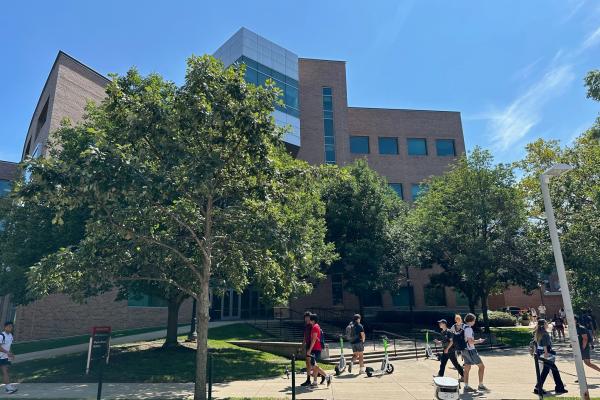
IMR Distinguished Lecture Series
SAVE THE DATE:
Date: Wednesday, October 30th, 2024
Time: 1:30- 3:30 pm
Location: 1080 Smith Seminar Room in the Physics Research Building
Schedule:
- 1:30 p.m. Prof. Maryam Ghazisaeidi, The Ohio State University
- 2:30 p.m. Prof. Giulia Galli, University of Chicago and Argonne National Laboratory
- 3:30-5:30 p.m. Student Poster Session and Refreshments
1:30 p.m. Physical metallurgy in the age of Si: a case for computational materials research
Maryam Ghazisaeidi
Distinguished Professor of Engineering in Materials Science and Engineering and Professor in Physics
Bio: Maryam Ghazisaeidi is a Distinguished Professor of Engineering and Professor of Materials Science and Engineering at The Ohio State University. She received her Ph.D. in Theoretical and Applied Mechanics from the University of Illinois at Urbana-Champaign, and her B.S and M.S. degrees from Sharif University of Technology in Tehran, Iran. Her research interest is in the area of computational materials science at the atomic scale with an emphasis on understanding the structure and chemistry of defects to predict novel material behavior. She has received the NSF CAREER award in 2015 and the AFOSR Young Investigator Program (YIP) award in 2017 and Computational Materials Science Rising Star award in 2020. She is an associate editor for Acta Materialia and Scripta Materialia and serves on the editorial boards of the Journal of Computational Materials Science and Journal of High Entropy Materials.
2:30 p.m. Behind the scenes: stories of atoms forming next generation materials
Giulia Galli
University of Chicago & Argonne National Laboratory
Abstract: Materials are enablers of innovation and have brought about revolutionary changes to society: familiar examples are silicon used in transistors and metal oxides in batteries, devices that have become omnipresent in our daily lives. In this talk we explore how the fundamental understanding of the way atoms interact in materials leads to predicting forms of matter that enable next generation technologies. We achieve such insights by combining quantum mechanics, high performance computers and by closely collaborating with experimentalists. I will address two outstanding challenges: the design of cheap and easily fabricated materials that efficiently capture solar energy, and the discovery of radically novel sensors and computers to swiftly move into the quantum information age.
Bio: She is the Liew Family Professor of Electronic Structure and Simulations in the Pritzker School of Molecular Engineering and the Department of Chemistry at the University of Chicago, and a Senior Scientist at Argonne National Laboratory, where she is the director of the Midwest Integrated Center for Computational Materials (https://miccom-center.org/). She is an expert in the development of theoretical and computational methods to predict and engineer material and molecular properties using quantum simulations (https://galligroup.uchicago.edu/). She is a member of the US National Academy of Sciences, the American Academy of Arts and Science, and the International Academy of Quantum Molecular Science, and Fellow of the American Association for the Advancement of Science and of the American Physical Society (APS). Her recognitions include the Material Research Society Theory Award, the David Adler Award and Aneesur Rahman Prize from the American Physical Society, the Feynman Nanotechnology Prize in Theory, and the Hirschfelder Prize in theoretical chemistry.
